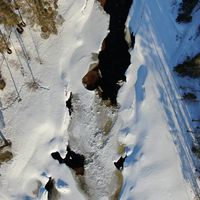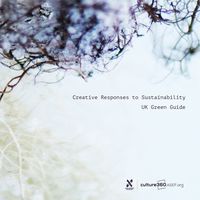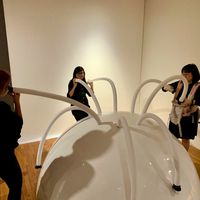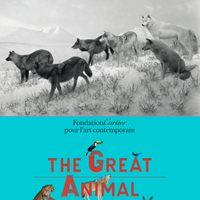#artsandtechnology: Making art on the frontlines of conservation | Indonesia

culture360.ASEF.org features Invisible Flock, as an introduction to our new series of articles on #artsandtechnology. Invisible Flock is an interactive arts studio operating at the intersection of art and technology, they create highly sensory installations and environments that ask audiences to renegotiate their emotional relationship to the natural world. In this article, Ben Eaton, Technical Director, Invisible Flock, explores combining art and conservation using digital expertise to help capture infrasounds of the Sumatran elephants.
Making work in zones of environmental conflict means collaborating closely with experts and using interdisciplinarity to create works that have a direct real-world impact.
Our latest work takes us to Sumatra, more specifically to the Leuser Ecosystem, one of the few remaining primary rainforests we still have on this planet and perhaps one of the last places on earth where Elephants, Orangutans, Tigers all roam in the wild.

The Leuser Ecosystem, Sumatra, Indonesia
As you can imagine, rainforests are under threat due to human activity, either directly through deforestation and poaching, or indirectly through the rise in global temperature. These are all affecting the forest’s longevity and the survival of its megafauna.
Why does this matter? For reasons that range from the practical to the ephemeral, but that are all critically important. Walking the forest with the rangers we are working with on the ground, we emerged from the edge of the tree line.
No longer protected by the canopy as we walked through an improvised farm, the temperature skyrocketed, what had been a deep and heavy humid air became dry, and the ground under our feet was no longer mud and decomposing biomatter, but earth scorched dry, crumbling and sliding underfoot.
This direct experience in micro-climate variance was a terrifying example of an issue playing out globally. As one of our ranger colleagues describes it to a local farmer, ‘if it is hot and sunny and you shave your hair off, your head is not more protected’.
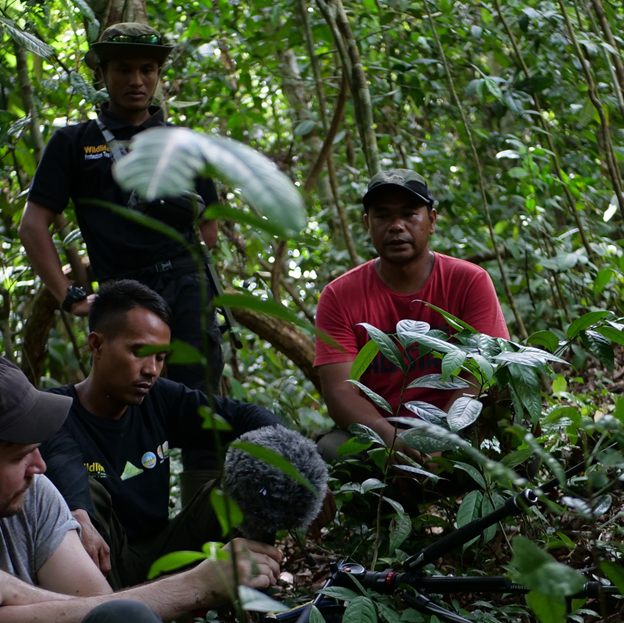
Interviewing rangers from the Leuser Conservation Forum (LFK)
The Leuser controls weather patterns, global temperatures and holds a vast amount of carbon. Within all of this, elephants are strong bio-indicators, their presence is both an indicator of ecosystem health, and they are also contributors to the forests seeding and growth, regenerating the undergrowth, spreading seeds. But crucially they exist somewhere deeper.
Extinction. It is a big word, it has slipped into our daily vernacular with worrying ease, we are losing species faster than we discover them, animals we have never named are slipping away, how do we measure the loss of something we never knew we had? Elephants loom large in our consciousness. Roughly 400 left in Aceh. 400. It's a tangible number. If you close your eyes you can probably picture 400 elephants. Can you picture them disappearing one at a time, 400, 399, 388, keep counting down until there are 10 left, then 1, then none? The age of loneliness.
Our practice has moved into the conservation and environmental space gradually over the last couple of years. There seems little point making work about anything else. We have always been firm believers in art as a mechanism through which to perceive the world and to better understand our relationship and actions in it. We began over 10 years ago by exploring interactivity and games, using direct participation from audiences in the work to allow them to perceive and navigate their immediate surroundings differently.
This has matured over time as we have explored the relationship between audiences and place, between participation and co-creation. Cross-disciplinarity has been central to this and technology has generally been the tool that has allowed us to exist across multiple spaces. Thinking of tech as a parasitic vector, a line you can draw that begins in data science, crosses into art and comes back out the other side into ecology, for example. The presence of technology and data as ubiquitous mediums across all sectors allows us to share space and create work with the same tools as a scientist in a lab, that architects use to create structures or the same satellite data used to track deforestation to name but a few.
In Sumatra, we are working with academics, conservationists, NGOs, local rangers and activists, all people who are deeply embedded in the issue and the landscape. It is a process of sharing and mutual support, we bring resources, skills, new platforms, and they bring the same, each in their unique way.
We believe there is a much greater function for art than simply ‘raising awareness’. To be frank, if your audience aren’t aware at this point then they really aren’t paying attention. We are beyond the stage where pointing at an issue is enough. For us, if art and artists are to be active participants in the movement against climate change, then we need to create work that is itself an active vehicle for change.
This is a process of learning and co-creation, of finding sweet spots where critical research and process meet. Currently, our input participates directly in the research and activities on the ground in Sumatra, generating material for our work and simultaneously contributing data and material that directly helps to protect these fragile environments.
As we are early in our making process, we try and keep the ‘what’ of our work open so we can discover the shape and core narrative in the landscape and the people there. Our process is one of capture, trying to find new aesthetics and ways to approach conservation.
We are experimenting with new tools – a LiDAR that allows us to capture precise 3D representations of the landscape and the animals we are studying, a growing catalogue of drone imagery, microphones that record outside of human hearing range and a network of custom-built bio-acoustic recorders. The latter are forming the backbone of a series of ongoing research projects by LEAP (Landscape Ecology and Primatology), a collection of researchers and academics working around the Leuser and with whom we are studying animal population density in specific sections of the forest.

LIDAR scan
These custom recorders build on already existing products and we have brought some of the needs that we have as a studio in terms of quality of sound and multichannel syncing to bear on what we hope is a different offer compared to other bio-acoustic recorders that are targeted primarily at research and science.
Syncing the recorder boxes via GPS allows us to record 20 channels of audio capturing 10 square meters of jungle sound for over 40 days. We have further equipped each box with stereo high-quality microphones, the kind you might traditionally see being used to record the sounds for something like Planet Earth. Combining our production focused needs with the requirements of the experiment creates not only a high quality spatial multichannel audio recording but also a vital database of sound for studying and better understanding the wildlife in the studied area.

Recording the deep infra-sound vibrations that elephants make to communicate
This means that our work is as likely to be engaged with directly in an installation in a gallery or a museum as it is in the pages of an academic journal or an ecological conference, simultaneously creating moments of aesthetic and emotional connection through the art work and helping researchers answer questions and better protect endangered species.
For us, this reflects the wider needs of the world we live in today. Not that art needs to perform a utilitarian function in order to justify its existence or compromise on creativity and ambition. Instead, art has a unique ability to reflect the complexity and interconnectedness of our global planet, as an active participant in affecting change.
This article is written by Ben Eaton, Technical Director at Invisible Flock. Creating highly sensory installations and environments that ask audiences to re-negotiate their emotional relationship to the natural world, believing that art today must have a positive impact on society and the world we live in and artists have a responsibility to open up collective thinking and to build space for critical enquiry. Drawing directly from the world around us, Invisible Flock aims to create art and foster relevant art practices that have a long-lasting transformative effect and sit across multiple contexts and adjacent sectors.
To know more:
WWF articles on Sumatra and Borneo:
https://www.worldwildlife.org/places/borneo-and-sumatra
The guardian article about Sumatra ‘Last Place on Earth’:
Article on Rudy Putra:
LEAP:
https://go-leap.wixsite.com/home
Similar content
deadline
31 Aug 2011
deadline
12 Dec 2021
from - to
02 Jul 2016 - 08 Jan 2017

